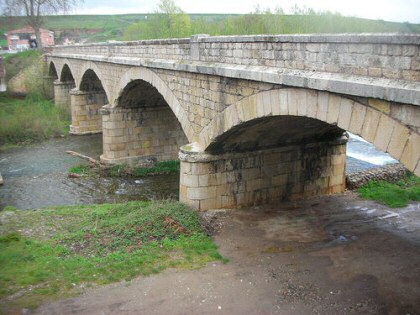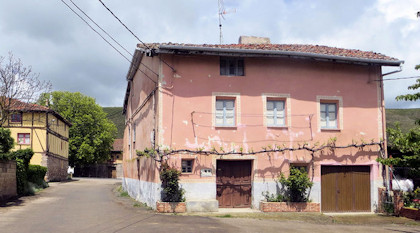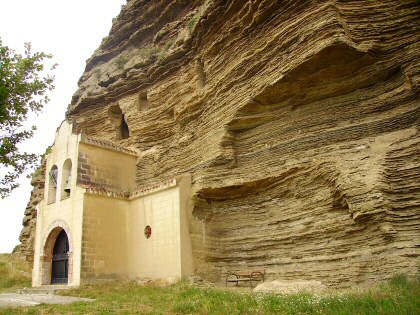
At the exit of Belorado we drove on this bridge over the Toroñ (Puente sobre El Toroñ).

Tosantos

Up to the Eremita Virgen de la Peña, the pilgrimage route for pedestrians ran more or less parallel to that for cyclists (on the BU710 road). Then the paths diverged and we took a huge diversions around all the beautiful oak forests to San Juan de Ortega. There we met up with the Camino again.
This is how the area looks to the cyclist after the Hermitage.
Continue on foot through the oak forests of Villafranca de Oca to San Juan de Ortega

San Juan de Ortegawith the chapel San Nicolas.
More about San Juan de Ortega

There is a nice story in the guidebook: according to it, in 1477, Saint San Juan de Ortega freed Queen Isabella, the Catholic, from her infertility after seven childless years of marriage, because she made a pilgrimage to his tomb here.
But said Isabella was not so barren.
She had ten children with her husband, Ferdinand II, King of Aragon. The first child (also Isabella) was born in 1470. One of the children was "Joan the Mad", (*1479; †1555) ∞ Philip I, called the Fair, son of the later Emperor Maximilian I.
This makes Isabella the Catholic the grandmother of Charles V.
After San Juan de Ortega, we drove on the hated N120 through many villages at hellish speed to Burgos. The entrance to Burgos turned out to be a bit difficult until we finally ended up in the Paseo del Espolón.

Paseo del Espolón, promenade in Burgos along the Rio Arlanzón. It leads to the Arco Santa Maria.
From now on in the avenue we enjoyed the wonderful ride to the city centre of Burgos.
Photos: Gerhard Eichinger

